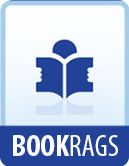Again did brother and sister collaborate in the next of the children’s books associated with the name of Lamb, and again Charles was responsible for but about a third of the whole. Of the ten tales in “Mrs. Leicester’s School” he wrote but three. These stories, which are supposed to be told by young girls to their school-mates, are simple records of childish experiences recounted with childish naivete. They met with some success during the lifetime of their authors—ten editions being disposed of in something under twenty years—and still hold their own, both as gift books for the young and as parts of that wonderfully varied, yet almost wholly delightful body of literature, associated with the name of Lamb. Here, as later in the “Essays of Elia,” we have recollections of the actual events of their own childhood permeating the invented narratives and imparting a new interest to the whole. Coleridge prophesied remarkably about this little book, when in talking to a friend he said:
It at once soothes and amuses me to think—nay, to know—that the time will come when this little volume of my dear and well-nigh oldest friend, Mary Lamb, will be not only enjoyed but acknowledged as a rich jewel in the treasury of our permanent English literature; and I cannot help running over in my mind the long list of celebrated writers, astonishing geniuses, Novels, Romances, Poems, Histories, and dense Political Economy quartos, which, compared with “Mrs. Leicester’s School,” will be remembered as often and praised as highly as Wilkie’s and Glover’s Epics and Lord Bolingbroke’s Philosophies compared with “Robinson Crusoe!”
In the “Adventures of Ulysses” Lamb sought to provide what he termed a supplement to Fenelon’s long-popular “Adventures of Telemachus.” He took the story from Chapman’s translation of Homer’s “Odyssey,” that translation which a few years later was to inspire John Keats with one of his finest sonnets. In a preface, a model of concise expression, the author of the tale explained:




